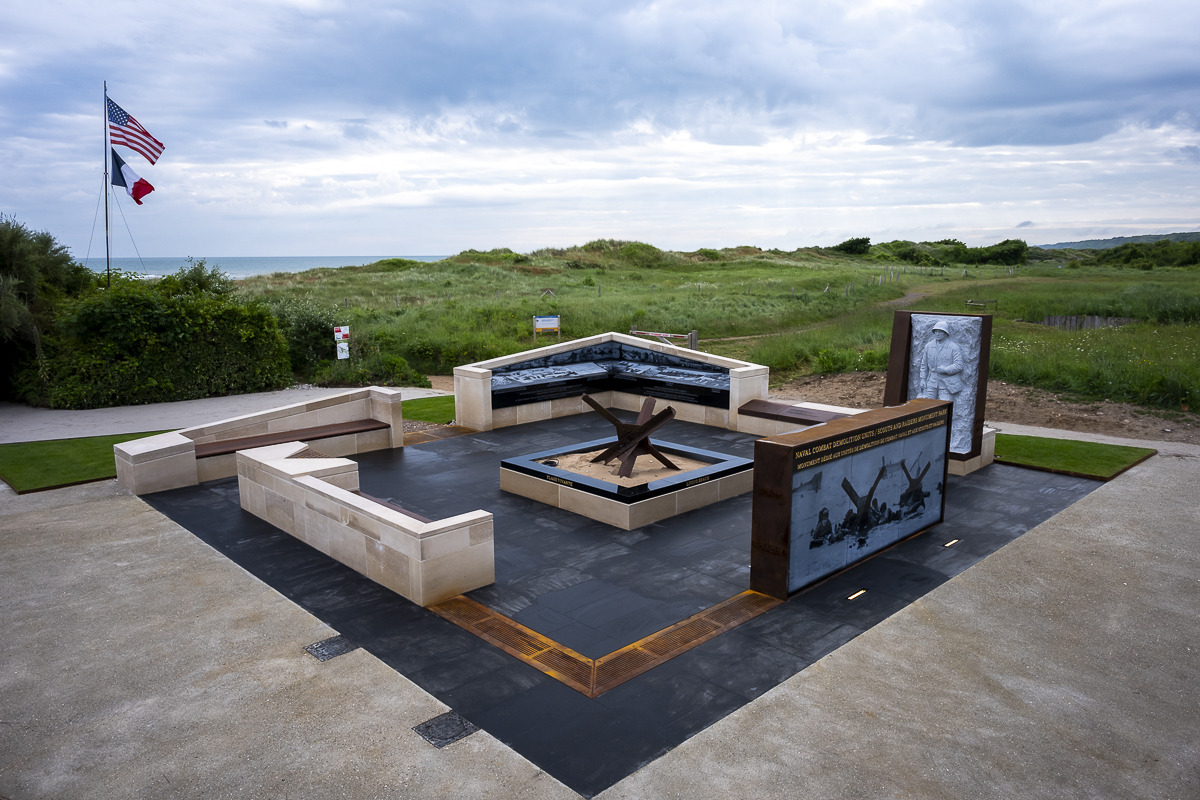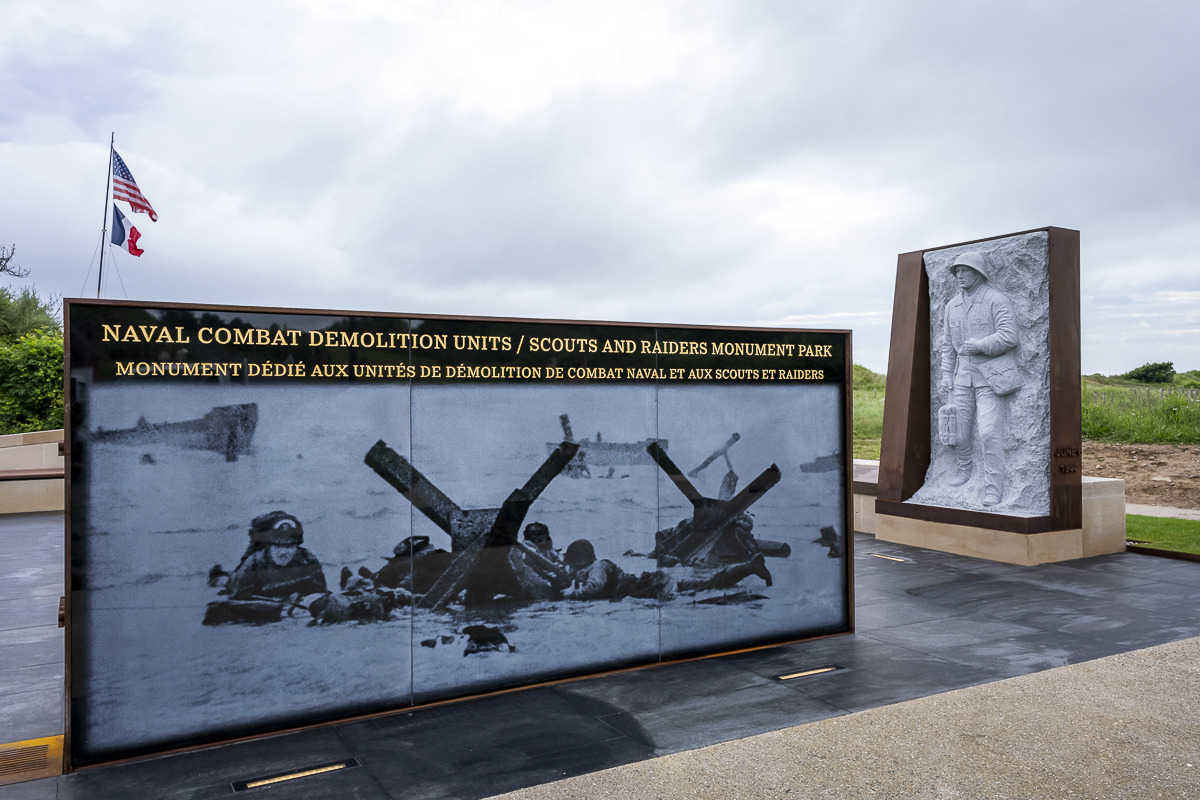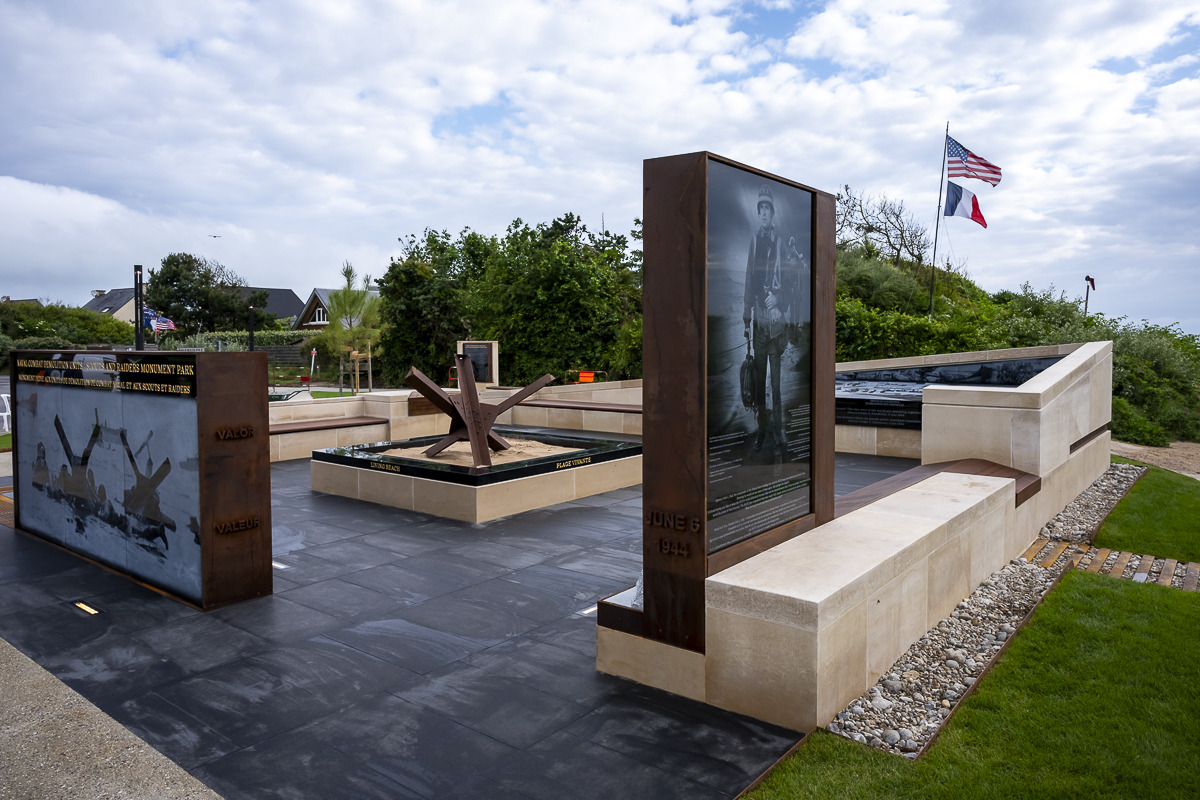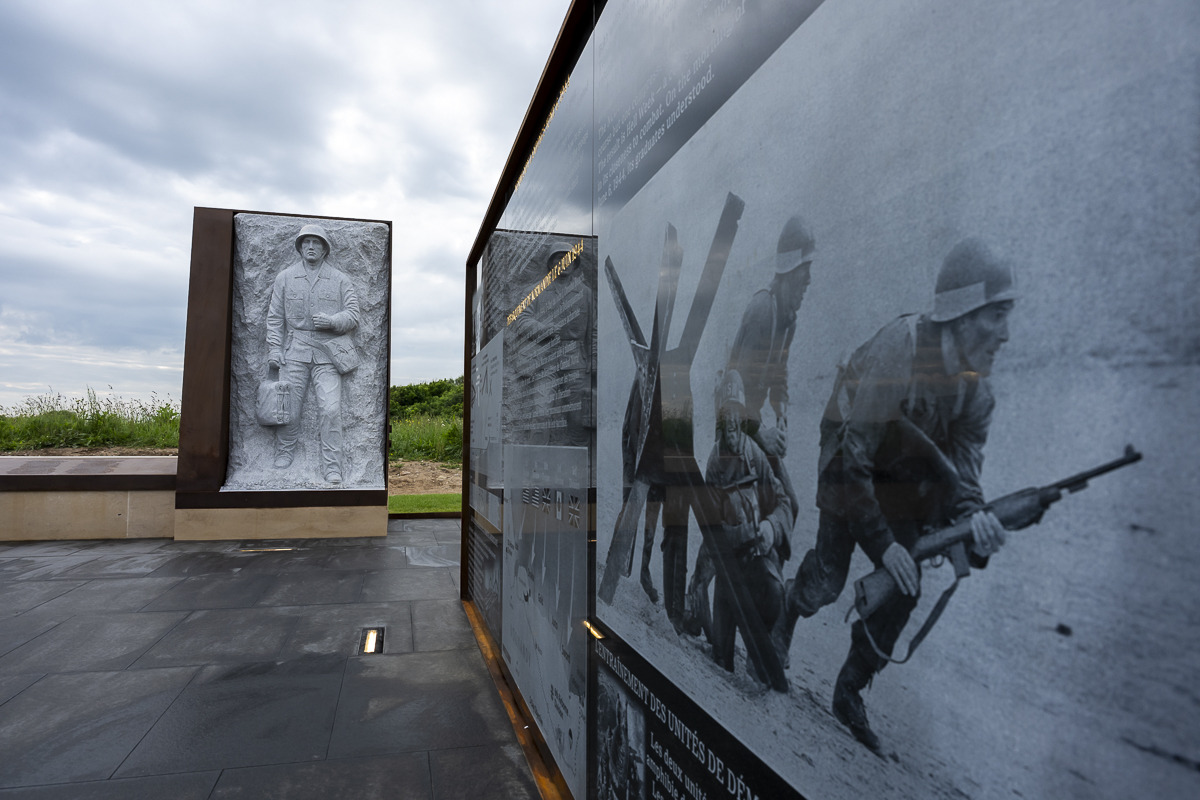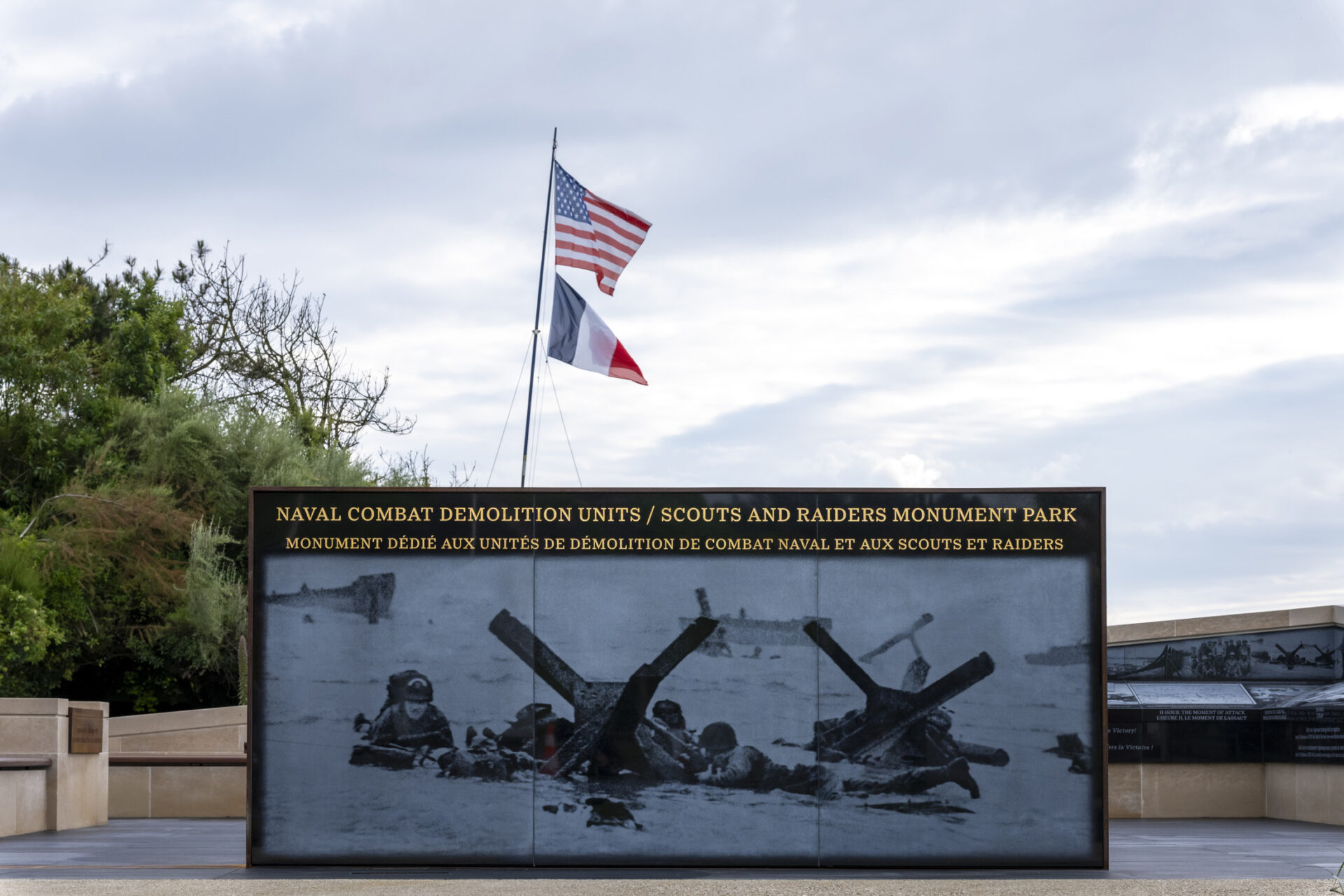Celebrating one of the most compelling chapters in U.S. Navy SEAL history, the U.S. Naval Combat Demolition Units/Scouts and Raiders Monument Park will provide visitors the opportunity to immerse themselves in the history and the vital role that the men of the Naval Combat Demolition Units (NCDUs) and Scouts and Raiders (S&Rs) had on D-Day and their impact on the subsequent liberation of France. The project, designed in collaboration with the Raleigh-based Studio X Design, is the second Navy SEAL monument that Clark Nexsen has collaborated on for the Navy UDT-SEAL Museum, continuing our dedication to honoring the courage and sacrifice of those who have served.
The largest seaborne invasion in history, D-Day was the successful invasion of Western Europe by the Allies during World War II. Codenamed Operation Overlord, the amphibious assault saw American, British, and Canadian troops, as well as units from countries like Poland and the Netherlands, storm the beaches of Normandy on June 6, 1944. Tasked with destroying obstacles and clearing mines for the U.S. landings on Utah and Omaha Beach, the NCDUs and Scouts and Raiders came under intense enemy fire and suffered a casualty rate of over 50% at Omaha Beach. Their skill, bravery, and sacrifice helped pave the way for countless Allied troops.
“The deadliest day in SEAL history was June 6, 1944. Our SEAL forefathers of the Naval Combat Demolition Units took devastating losses while clearing the beaches of Normandy so the troops could get ashore on D-Day. The Museum is proud to honor the courage and sacrifice of the NCDUs and the Scouts and Raiders with a striking Monument on Omaha Beach that will last for generations.”
Captain Rick Woolard, Navy UDT-SEAL Museum Chairman, retired SEAL
Located on the Dog Red sector of Omaha Beach in the town of Saint-Laurent-sur-Mer, the U.S. Naval Combat Demolition Units/Scouts and Raiders Monument Park stands in contrast to the various plaques and markers located throughout Normandy. Originally conceived as a single block of granite, the project grew to be an interactive monument park, integrating with the local community and surroundings. Visitors can use the tree canopies for shade, benches for seating, and can easily access the Normandy American Cemetery and Memorial, which is less than 1,000 meters away. Built with sight lighting for a nighttime presence and accessibility for all visitors, the monument seamlessly connects to the beach with pathways and open sightlines.
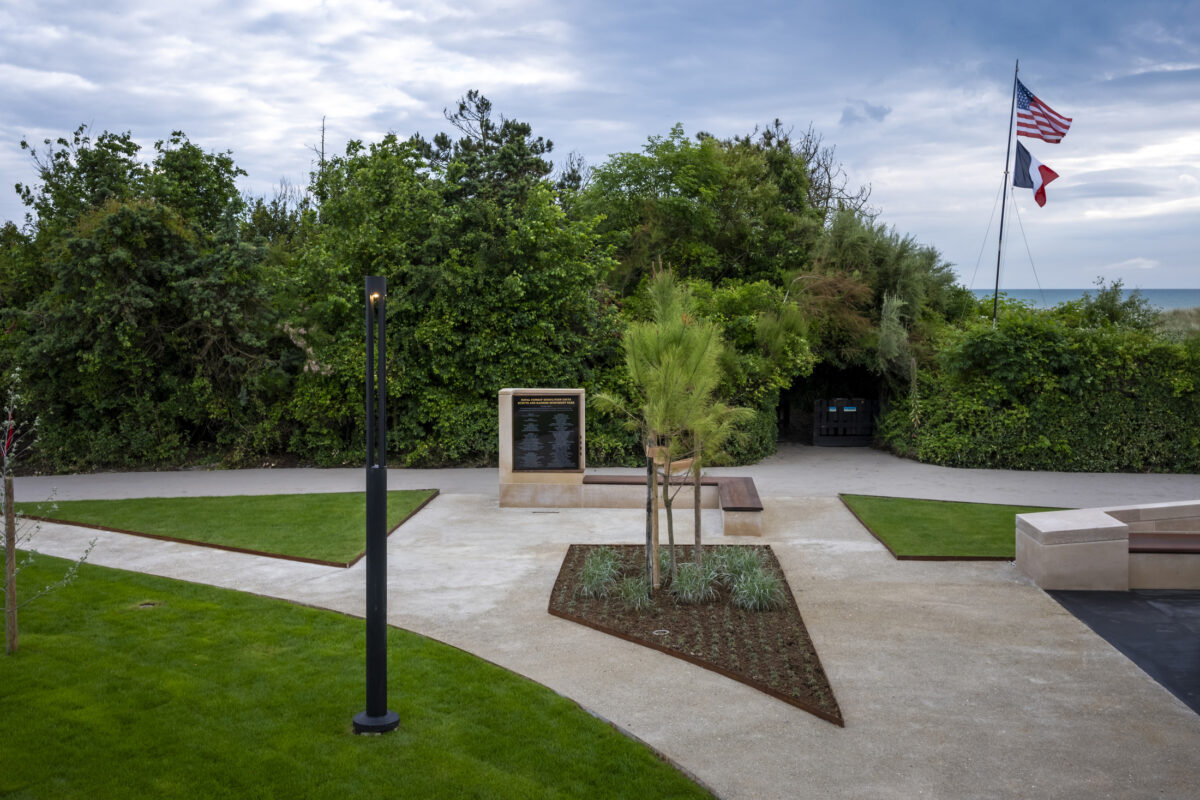
In addition to a park that people can enjoy, the monument offers a variety of immersive and educational features, such as history panels with scenes from Omaha Beach on D-Day and laser-etched history inscriptions. Information is available in English and French, with QR codes providing more information for visitors. An original 1944 hedgehog, the most common obstacle the NCDU and S&Rs destroyed on Normandy, is located at the center of the monument. Additionally, a sculpture of an NCDU Demolitioneer in combat gear illustrates what the men looked like on D-Day.
Key to the project was providing a way to connect the service and history of previous, current, and future service members. To accomplish this, sand from Omaha Beach and locations where the NCDUs, S&Rs, and Navy SEALs have served was placed around the hedgehog obstacle, creating a ‘living beach.’ Veterans from all generations will be encouraged to add to this ‘living beach.’ A time capsule has been hidden within the monument, providing future generations with a tangible connection to the past and present.
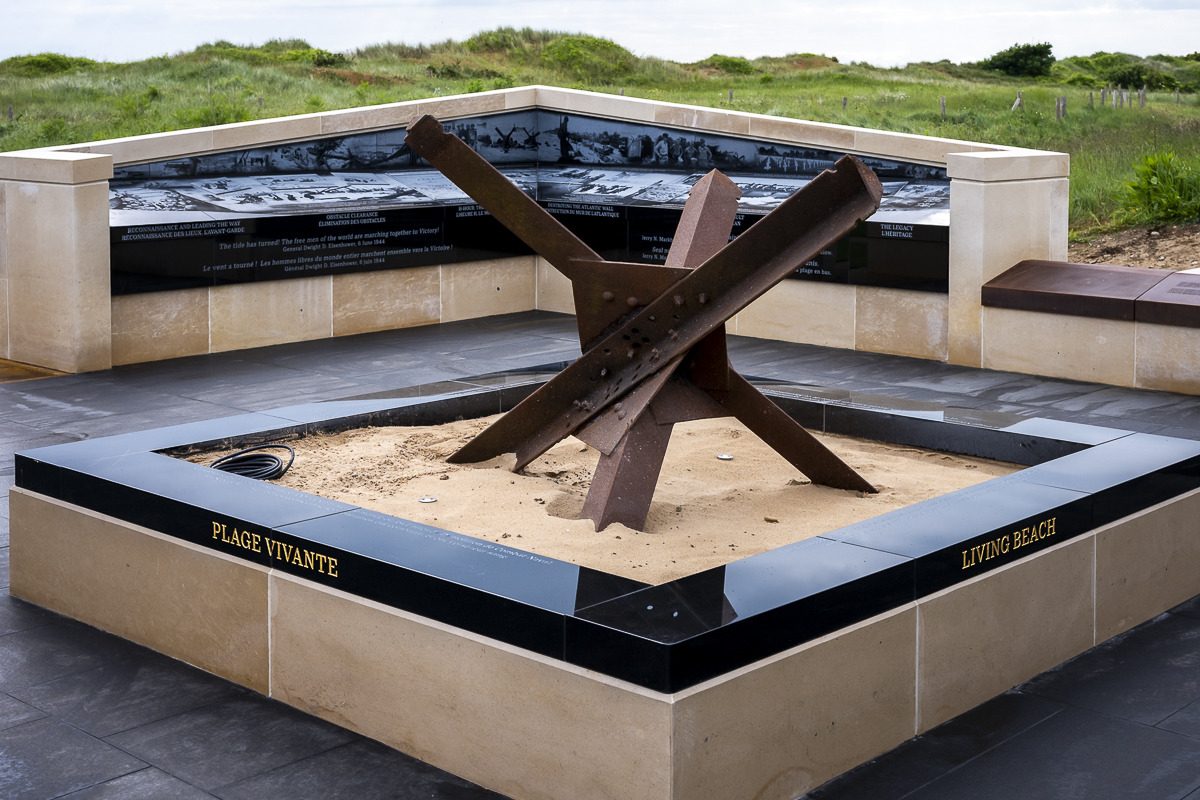 A collaborative effort that brought together seven teams from across the U.S. and France, the 7,500 square-foot U.S. Naval Combat Demolition Units/Scouts and Raiders Monument Park is built to stand the test of time. With interactive and educational displays, close integration with the area and community, and a design that celebrates an extraordinary moment, our team helped deliver a project that honors the legacy of the U.S. Navy SEALs.
A collaborative effort that brought together seven teams from across the U.S. and France, the 7,500 square-foot U.S. Naval Combat Demolition Units/Scouts and Raiders Monument Park is built to stand the test of time. With interactive and educational displays, close integration with the area and community, and a design that celebrates an extraordinary moment, our team helped deliver a project that honors the legacy of the U.S. Navy SEALs.
Awards
ACEC Virginia Merit Award for Excellence in Engineering, 2022
